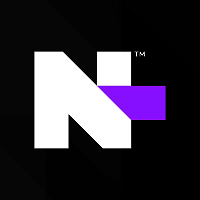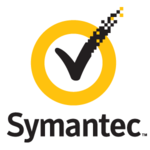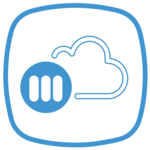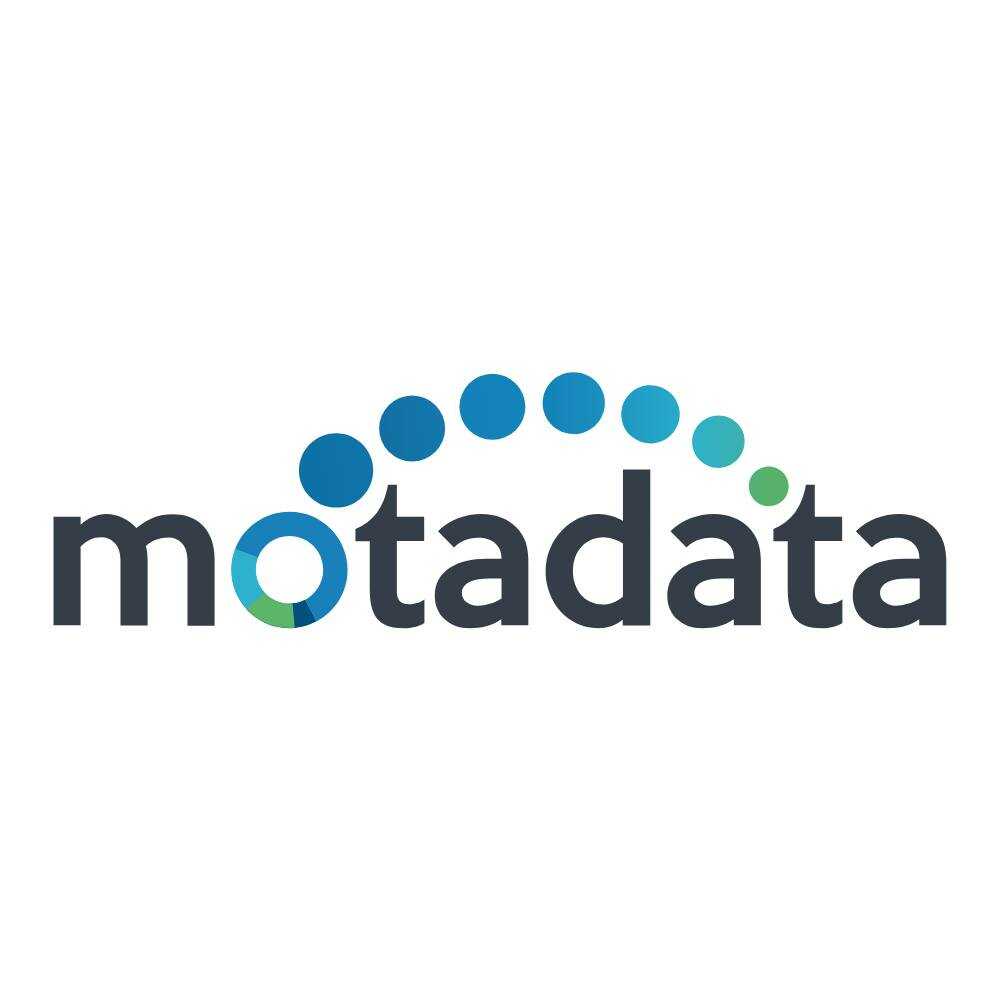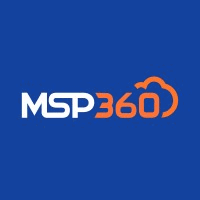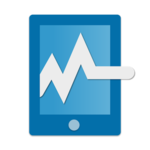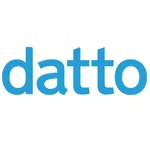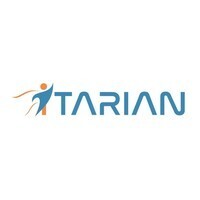Yes, most patch management software can be accessible from numerous devices and platforms, including desktops, laptops, servers, and mobile devices. This enables a consolidated and efficient approach to patching and upgrading all devices in an organization. The software often supports a wide range of operating systems and can be used remotely, making it useful and adaptable for enterprises that use a variety of devices and platforms.
List of 20 Best Patch Management Software
N-central, developed by N-able, is a leading RMM solution designed specifically for MSPs and IT professionals. It offers advanced capabilities for identifying and addressing threats, repairing systems, and efficiently managing Microsoft 365, Intune d...Read More N-central
Symantec Endpoint Protection - a solution for enterprises looking to enhance their cyber security measures. This software provides robust two-factor authentication and multi-level threat protection, ensuring unbeatable security for your system. It al...Read More Symantec Endpoint Protection
ManageEngine RMM Central solution for MSPs to efficiently manage and monitor multiple client networks from a single centralized console. With a comprehensive set of features, RMM Central streamlines daily tasks for MSPs, reducing the need for excessi...Read More ManageEngine RMM Central
Syxsense Manage is a endpoint management solution that streamlines your IT operations and boosts efficiency. With its comprehensive features, get real-time insights, automate patching, and effortlessly manage your devices with complete control. From...Read More Syxsense Manage
Patch Manager Plus is a patch management solution for your systems. With support for over 530 third-party vendors and a central platform, you can effortlessly update various OS and external platforms. Keep your systems secure and up-to-date with Patc...Read More Patch Manager Plus
ConnectWise Automate is a IT service management software built for MSPs. It integrates advanced automation, remote monitoring, and robust cybersecurity capabilities to streamline processes and provide exceptional services. With ConnectWise Automate,...Read More ConnectWise Automate
SmartDeploy solution for simplifying IT operations. This powerful platform streamlines the deployment, updating, and security of PCs, enabling maximum productivity for your workforce. Say goodbye to complicated imaging and management tasks as SmartDe...Read More SmartDeploy
Miradore Online - the perfect solution for simple and efficient mobile device management. This cutting-edge software allows you to effortlessly control your devices from any platform, saving you time and eliminating mistakes. Say goodbye to manual ma...Read More Miradore Online
Acronis Cyber Protect solution for cybersecurity and data protection. This platform is ideal for businesses, managed service providers, and IT teams, offering top-notch features such as zero-day malware and ransomware protection, backup, disaster rec...Read More Acronis Cyber Protect
Motadata ServiceOps is a advanced IT monitoring and management tool that utilizes real-time processing, correlation, and intelligent visualization to extract valuable business insights from network and security data. With our solution, your organizat...Read More Motadata ServiceOps
Comodos robust antivirus software provides top-notch defense against malicious software, viruses, and hidden files. It utilizes cutting-edge cloud technology to quickly scan your device and continuously updates its database with the latest global mal...Read More Comodo
Microsoft Defender for IoT - the leading security solution for connected devices. This powerful software sets a new standard in the industry, offering advanced features and unrivaled protection. Its innovative approach provides solid defense mechanis...Read More Microsoft Defender for IoT
Kandji is a robust and integrated solution that combines Device Management, Endpoint Detection & Response, and Vulnerability Management to provide comprehensive security and productivity for Apple users. By seamlessly merging IT and InfoSec functions...Read More Kandji
MSP360 is a MSP software designed for Enterprises, SMEs, and StartUps. With a range of features including Dashboard, Remote Access, and Scheduling, MSP360 offers a complete solution for Web App and Android management. Simplify your handling and gain...Read More MSP360
Pulseway is the leading solution for remote system management, baseline management, and scheduled deployment. Designed with MSPs in mind, it offers end-to-end capabilities to efficiently address a range of issues. From remote system access to seamles...Read More Pulseway
Ansible Tower - the essential automation tool for effortless application deployment, streamlined task management, and efficient system administration. Build a strong DevOps framework with features like Deployment Management and Source Control. Simpli...Read More Ansible Tower
Jamf Now is the ideal solution for small to medium businesses seeking to effectively manage their Apple devices. Our platform simplifies the process of configuring corporate email accounts on all Apple devices with just a few clicks. We seamlessly in...Read More Jamf Now
Datto RMM, a cloud-based software designed to remotely secure, monitor, and manage endpoints for businesses. With its dependable features, this comprehensive platform helps reduce costs and improve network efficiency. Safeguard systems and devices fr...Read More Datto RMM
ITarian solution for simplifying and automating patch management processes. With its powerful features, this platform covers all steps of patching and offers detailed reports to monitor the progress of automated deployment tasks. Say goodbye to manua...Read More ITarian
Learn More About Patch Management Software
- What Is Patch Management Software?
- What Are The Recent Trends In Patch Management Software?
- Benefits Of Using Patch Management Software
- Important Factors To Consider While Purchasing Patch Management Software?
- What Are The Key Features To Look For In Patch Management Software?
- Why Do Businesses Need Patch Management Software?
- How Much Time Is Required To Implement Patch Management Software?
- What Is The Level Of Customization Available In Patch Management Software?
- Which Industries Can Benefit The Most From Patch Management Software?
- Conclusion
What Is Patch Management Software?
Patch management software is an essential tool for any firm that wants to maintain and secure its computer systems. It is a software solution that enables IT professionals and system administrators to keep their systems up to date by handling patches, updates, and fixes for software applications, operating systems, and other programs.
Simply simply, patch management software automates the process of discovering, downloading, and applying updates and patches for various software packages running on a computer system. This comprises security patches, bug fixes, and feature updates provided by software providers. The software simplifies patch administration by offering a centralized platform for monitoring and deploying patches across all devices in a network.
It eliminates the need for IT professionals to manually install updates, saving them time and effort. Furthermore, it keeps all devices up to date, reducing the chance of security breaches and software malfunctions. One of the primary advantages of patch management software is the ability to schedule updates and patches during off-hours, which prevents disruptions to workflow and productivity.
Furthermore, it provides visibility into the state of patches put on each device, enabling IT personnel to manage and monitor patching efforts. Patch management software, however, does more than merely install updates. It also includes tools like vulnerability assessment and reporting, which help firms keep aware about potential security threats and compliance issues.
When it comes to selecting patch management software, there are several variables to consider. These include the size and complexity of your network, the software and devices you must maintain, and the degree of automation and customisation necessary. It is critical to select a solution that is appropriate for your organization's specific requirements and budget.
What Are The Recent Trends In Patch Management Software?
Patch management software has become an essential tool for enterprises of all kinds, allowing them to maintain their systems up to date and secure against potential threats.
In recent years, there have been numerous notable trends in this category that should be considered before making a purchase decision.
1. Automation And AI-Powered Patching: With an increasing number of endpoints and complex IT infrastructures, traditional manual patch management techniques have become inefficient and time-consuming. As a result, there is a shift towards automation and AI-driven patching in order to streamline the process and assure timely patch deployment.
2. Cloud-Based Patch Management: Cloud-based patch management solutions are popular due to their scalability and flexibility. They enable enterprises to manage patches across their whole network, including distant and mobile devices, from a centralized location. This trend is likely to continue as more organizations adopt cloud technologies.
3. Integration With Security Solutions: As cybersecurity risks increase, patch management software must have strong security features. Patch management has been integrated with other security solutions such as vulnerability scanners and antivirus software, allowing enterprises to take a more comprehensive approach to security.
4. Mobile Device Patching: As the use of mobile devices for work grows, companies must prioritize patch management for these devices. As a result, patch management software now supports mobile operating systems, allowing enterprises to patch all of their devices from one platform.
5. Compliance And Reporting: Regulatory compliance is a major problem for enterprises, and patch management is critical to meeting compliance standards. Recent trends have seen a focus on compliance and reporting capabilities in patch management software, making it easier for enterprises to demonstrate that they are adhering to required security requirements.
Benefits Of Using Patch Management Software
Introduction: Patch management software is an essential tool for any organization seeking to maintain the security and stability of its software systems. This software aids in the detection and correction of vulnerabilities in applications and operating systems, hence protecting the network against cyber threats.
In this buyer's guide, we'll go over the benefits of patch management software and why it's necessary for your business.
1. Comprehensive And Effective Patch Management: Manually verifying and updating all of an organization's systems can be both time-consuming and error-prone. Patch management software automates the process, making it quicker and more efficient. It allows you to manage patches for all of your systems from a single location, lowering the likelihood of missing essential upgrades.
2. Improved Network Security: Cyber dangers are always growing, and the greatest defense against them is to be up to speed on security patches. Patch management software guarantees that all of your systems are frequently updated with the most recent security updates, lowering the chance of a cyber attack. It also aids in identifying and resolving vulnerabilities before they may be exploited.
3. Reduced Downtime: Unpatched systems are prone to failure, resulting in costly downtime for your company. Patch management software allows you to schedule automatic updates during off-peak hours, reducing disturbance to business operations. It also enables you to test fixes before deployment, ensuring that they do not cause compatibility difficulties.
4. Compliance: Many sectors have severe rules requiring them to keep their software systems up to date with the most recent security patches. Patch management software enables firms to comply with these laws while avoiding penalties for noncompliance. It also keeps track of all patches applied, which is important for audits.
5. Cost-Effectiveness: Investing in patch management software can help firms save time and money. It removes the need for manual labor, lowers the danger of costly cyberattacks, and reduces corporate downtime. It is an inexpensive way for keeping a secure and efficient network.
Important Factors To Consider While Purchasing Patch Management Software?
When it comes to managing software patches, a dependable and effective patch management tool is required. This not only helps to keep your systems secure and stable, but it also saves your IT team time and effort. However, with so many options available, it might be difficult to select the best patch management software for your business.
To make your decision easier, here are some crucial considerations to consider while selecting patch management software:
1. Compatibility: One of the first considerations is if the patch management software is compatible with your existing systems and applications. It is critical to verify that the software integrates easily with your infrastructure to eliminate potential conflicts and maintain smooth operations.
2. Scalability: As your firm expands, so will your IT infrastructure. As a result, it is critical to select patch management software that can scale to meet your company's needs. Consider the software's ability to support multiple devices and its efficiency when dealing with a high number of patches.
3. Automation And Customization: The finest patch management software should allow you to automate software updates and patch deployments. It should also enable customisation to target specific systems, apps, and patches, providing you greater control over the patch management process.
4. Patch Detection And Deployment Speed: With software patching, time is of the importance. Look for a patch management platform that can swiftly identify and distribute missing patches. This helps to reduce potential vulnerabilities while keeping your systems up to date.
5. Patch Testing And Rollback Options: Patching can occasionally cause system issues or conflicts. As a result, having patch management software that allows for testing and rollback is vital. This allows you to test fixes before deploying them and, if necessary, revert back to a previous stable version.
6. Multi-Platform Support: With so many operating systems, devices, and apps utilized in today's enterprises, it's critical to select patch management software that supports a variety of platforms. This ensures that all of your systems are secure and up to date, regardless of operating system.
7. Reporting And Analytics: Patch management software should generate complete information on patch deployment status, compliance, and any faults that occur during the process. This allows you to monitor the success of your patching procedure and discover areas for improvement.
8. Technical Support And Updates: Before investing in patch management software, assess the amount of technical assistance given by the provider. This ensures that you receive assistance if you have any problems. Also, seek for software that provides regular upgrades and enhancements to boost efficiency and stay up with the ever-changing threat landscape. By taking these essential elements into account, you can make an informed selection and select patch management software that matches your business requirements while also keeping your systems secure and up to date.
What Are The Key Features To Look For In Patch Management Software?
When it comes to choosing the best patch management software, every buyer should examine a few crucial aspects. These functions are essential for ensuring that the software efficiently manages and applies patches to your systems, keeping them secure and up to date.
The following are the essential features to look for in patch management software.
1. Automated Patching Capabilities: One of the most significant aspects of patch management software is the ability to automate the patching process. This saves time and effort while also ensuring that crucial patches are applied quickly and consistently across all devices.
2. Multi-Platform Support: With a rising number of devices and operating systems on the market, it is critical to select patch management software that supports many platforms. Look for software that supports both Windows and Mac operating systems, as well as Linux, iOS, and Android-powered devices.
3. Centralized Management: A centralized patch management system enables you to manage all of your devices and patches from a single, user-friendly interface. This eliminates the need for manual patching on each device, which saves time and reduces the danger of human error.
4. Comprehensive Reporting: Effective patch management software should generate detailed reports on patching actions and status, giving you insight into the patching process. This allows you to identify any faults or vulnerabilities that need to be fixed, ensuring that your systems are completely secure.
5. Patch Rollback: Patches can cause unanticipated problems or conflicts with other applications. Patch management software with a rollback option allows you to revert to the prior patch or system state, reducing the impact of failures.
6. Customization Options: Each business is unique, and patch management requirements may differ depending on the industry, size, and type of system. Look for software that has customization options, so you can personalize the patching procedure to your individual needs.
7. Planned And On-Demand Scans: A reliable patch management solution should support both planned and on-demand scanning. This enables you to proactively monitor for vulnerabilities and install patches as needed, lowering the risk of cyberattacks.
8. Security And Compliance: Data security and compliance are key issues for any firm. Look for patch management software that meets industry standards and can help you keep your environment secure and compliant.
Why Do Businesses Need Patch Management Software?
Businesses require patch management software because it is critical to the security and stability of their systems. With the growing amount of cyber threats, keeping software and applications up to date is critical for protecting sensitive data and avoiding potential breaches. Patch management software automates the process of discovering, downloading, and installing updates, lowering the likelihood of security vulnerabilities.
It also assists firms in complying with regulatory obligations and industry norms, which is critical for consumer trust and reputation management. Patch management software, in addition to providing security, enhances system efficiency by removing bugs and malfunctions, ensuring that company activities run smoothly. Furthermore, it saves time and resources because manual patching can be time-consuming and labor-intensive, particularly for businesses with various devices and systems.
How Much Time Is Required To Implement Patch Management Software?
When considering deploying patch management software, one of the most typical queries is how long it would take to finish the installation and setup process. The answer to this question varies based on a number of criteria, including network size, software complexity, and level of customization. However, certain broad recommendations can help purchasers estimate the time required to establish a patch management solution.
Patch management software installation and initial configuration might take anywhere from a few hours to several days. This timeframe encompasses actions such as downloading and installing software, customizing settings, and establishing automation procedures. Larger networks with more endpoints may take longer to set up than smaller networks.
It's also worth noting that the time necessary for installation can vary depending on the network's readiness. If a network has many vulnerabilities that must be fixed before patch management software can be installed, this can lengthen the schedule. On the other hand, if a network is already well-maintained and up to date, installation time may be reduced. Before making a purchase decision, purchasers should carefully analyze the vendor's implementation procedure.
Some patch management software suppliers provide professional assistance with installation and configuration, which can save time and assure a flawless implementation. Additionally, purchasers should consider the level of support and training supplied by the vendor, since this can have a big impact on how long it takes to get the product up and operating.
What Is The Level Of Customization Available In Patch Management Software?
Patch management software enables businesses to easily and efficiently manage their software applications and systems by automating the download, installation, and testing of patches and updates. The level of customization offered by patch management software is a crucial consideration to consider when selecting the best solution for your business.
Many patch management software suppliers offer extensive customization to fit the specific demands of their customers. This includes the option to schedule updates at specified times, establish customizable groups for targeted patching, and provide varying levels of access to various people. Some patch management software also lets you customize the patching procedure itself.
This can include the ability to select which patches to apply, establish patching policies based on severity or priority, and control the frequency of patching cycles. Furthermore, some patch management software allows you to generate custom reports and dashboards to track patching activity and gain an overview of the state of your systems. This amount of customisation enables firms to adjust the program to their individual needs and obtain insight into their patching procedures.
Furthermore, some patch management software integrates with other IT systems and applications, including network monitoring and inventory management software. This enables for a more smooth and faster patch management procedure, which can be tailored to a business's existing IT infrastructure. Overall, the extent of customization in patch management software varies by vendor. Businesses must carefully examine their individual requirements and select software that provides the appropriate level of customisation in order to properly manage and secure their applications and systems.
Which Industries Can Benefit The Most From Patch Management Software?
Patch management software is essential for ensuring the security and stability of a company's software systems. It enables enterprises to centrally manage and deliver updates, patches, and security fixes throughout their network, ensuring that all devices are up to date and free of known vulnerabilities. While patch management software can assist any firm with a digital infrastructure, particular industries stand to benefit the most from its use.
One such industry is the healthcare sector. Healthcare institutions are attractive targets for cyber assaults as they increasingly use electronic health records and digitize patient data. A single flaw in their software systems could compromise critical patient information, resulting in legal and financial consequences. As a result, healthcare businesses must implement an effective patch management system to keep their systems secure and regulatory compliant.
Similarly, the finance industry is a prime target for hackers because of the sensitive financial data housed on its networks. Financial organizations must also comply with rules such as the Payment Card Industry Data Security Standard (PCI DSS), which requires the prompt installation of security fixes. Financial institutions can use patch management software to protect their systems and data from potential cyber threats.
Patch management software can also be extremely beneficial to government agencies, particularly those in charge of national security and confidential material. These entities must follow tight security policies and compliance regulations, and any software vulnerability might have serious consequences. Patch management software enables government agencies to quickly and efficiently distribute security updates across their systems, thereby improving their overall security posture.
Other areas that can benefit from patch management software include education, retail, and manufacturing. With these sectors' increasing reliance on technology, it is critical to ensure the security and stability of their systems. Patch management software can assist these companies reduce cyber threats and preserve their digital assets.
Conclusion
Conclusion: In today's fast-paced, ever-changing technology scene, patch management is critical for enterprises to keep their systems and data secure and up to date. Investing in dependable and efficient patch management software is critical for any company trying to optimize its patching process and reduce security risks. When choosing patch management software, take in mind your company's specific demands and expectations.
Take the time to investigate and compare several solutions, taking into account things like compatibility, convenience of use, and customer service. Finally, the correct patch management software will not only save your company time and money, but will also provide you peace of mind knowing that your systems are protected from possible dangers. With this buyer's guide, we aim to have supplied you with enough information and factors to make an informed selection and find the best patch management software for your company. Remember to emphasize security and be proactive in patch management to keep ahead of cyber threats.
Patch Management Software FAQ's
Can Patch Management Software Be Accessed Across Multiple Devices And Platforms?
Is Patch Management Software Future-Proof And Adaptable To Emerging Technologies Like AI, Blockchain Or IoT?
Yes, most modern patch management software is intended to be future-proof and adaptable to new technologies. These software solutions are regularly updated to reflect the ever-changing technological context. This includes patch management for AI, blockchain, and IoT devices. Patch management software assures the security and upkeep of the networks and systems it covers by remaining current with developing technology.
Is There A Free Trial Offered To Assess Patch Management Software Before Committing?
Yes, many patch management software firms provide free trials for a limited time before committing to their services. This allows users to evaluate the software's functionality and compatibility with their existing systems before making a purchase decision. During the trial, users can try services including vulnerability screening, patch deployment, and reporting. It's a good time to learn about the software's features and assess whether it suits your organization's requirements.
Does Patch Management Software Offer Data Security Features And Meet Regulatory Compliance Standards?
Yes, patch management software often includes data security features and adheres to regulatory compliance norms. It assures that all software on an organization's network is up to date and free of known vulnerabilities, lowering the likelihood of data breaches.
Furthermore, it assists firms in complying with industry laws such as HIPAA, GDPR, and PCI-DSS by automating upgrades and monitoring for security patches. This helps businesses remain compliant and avoid penalties for noncompliance.
Can Patch Management Software Integrate Seamlessly With Existing Tools And Platforms?
Patch management software can work seamlessly with existing tools and platforms. APIs (Application Programming Interfaces) enable different software systems to communicate with one another. Patch management software helps speed up the patching process by integrating with existing tools and platforms, ensuring that all devices and systems are up to date and safe. This increases overall system efficiency and lowers the danger of cyber threats.

